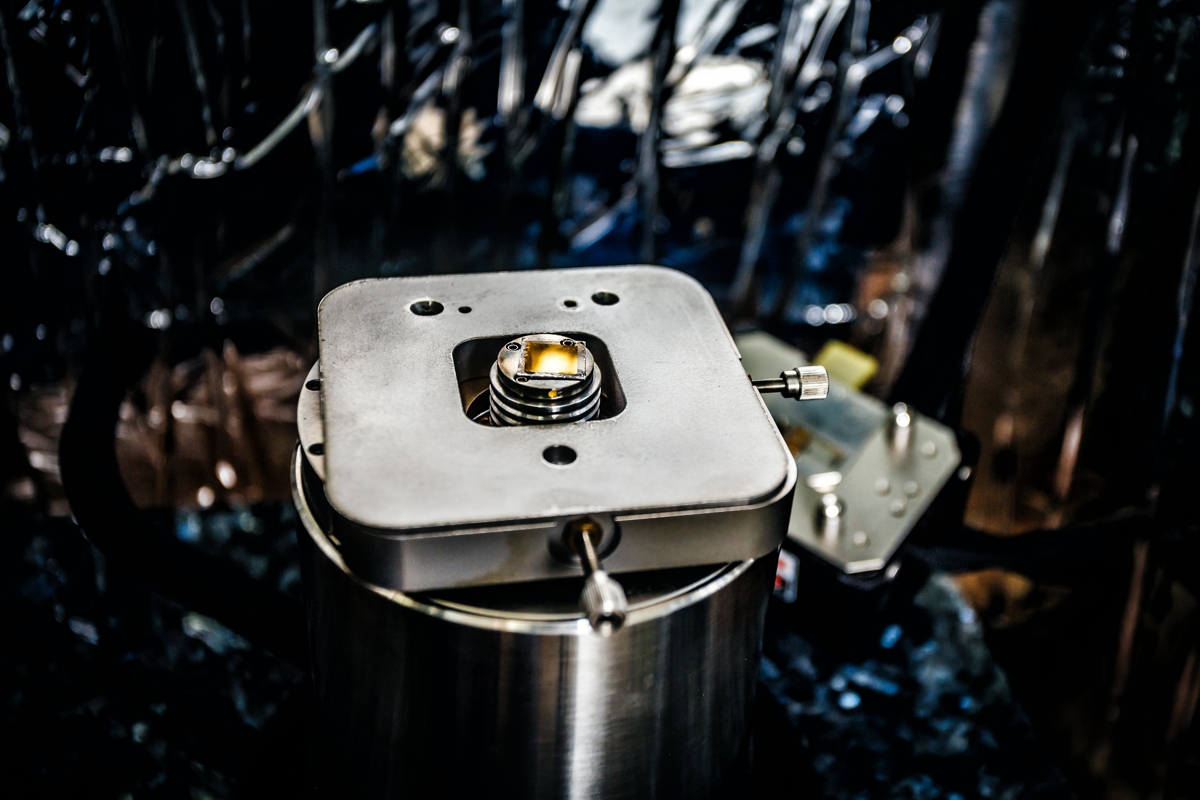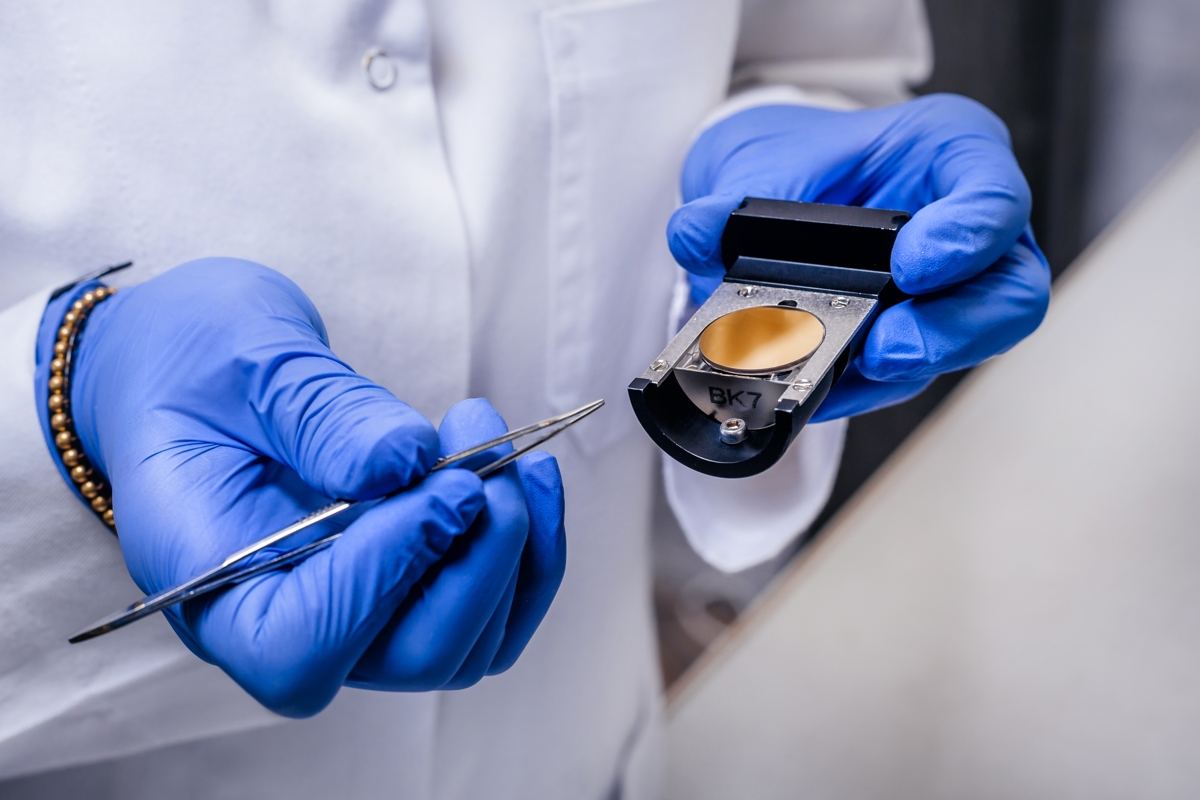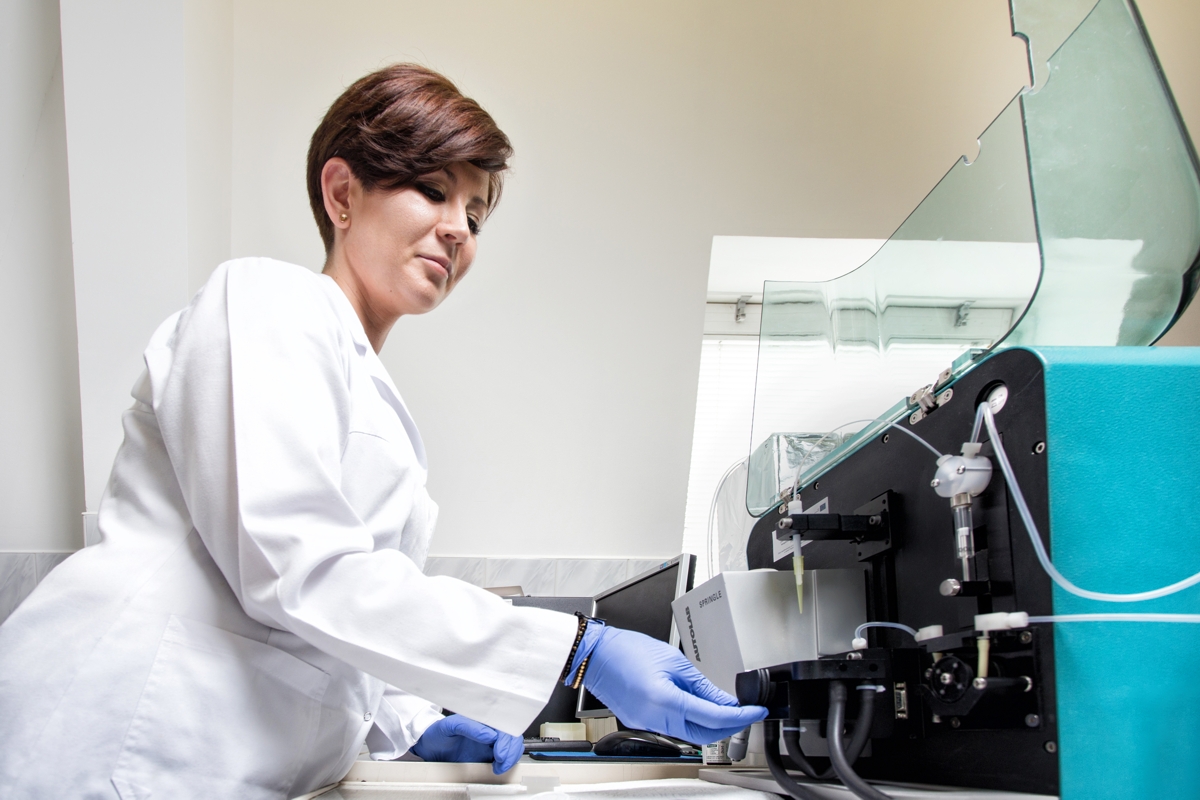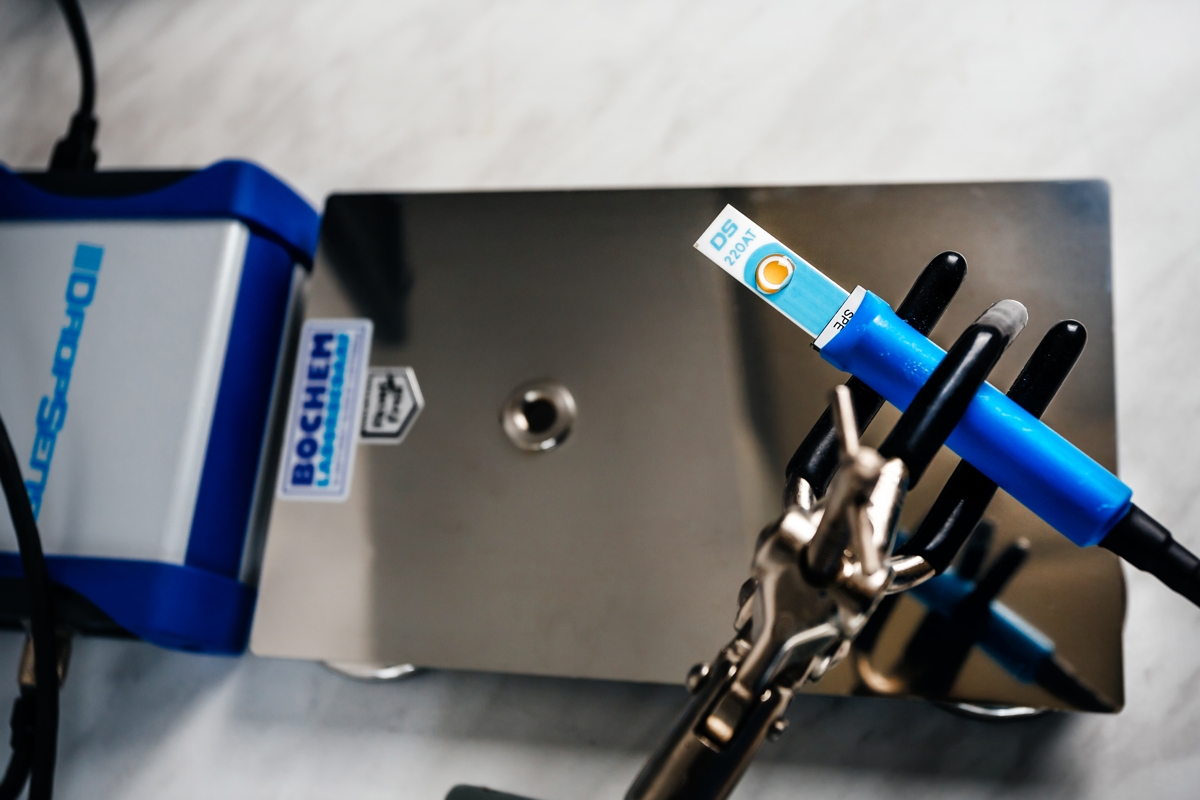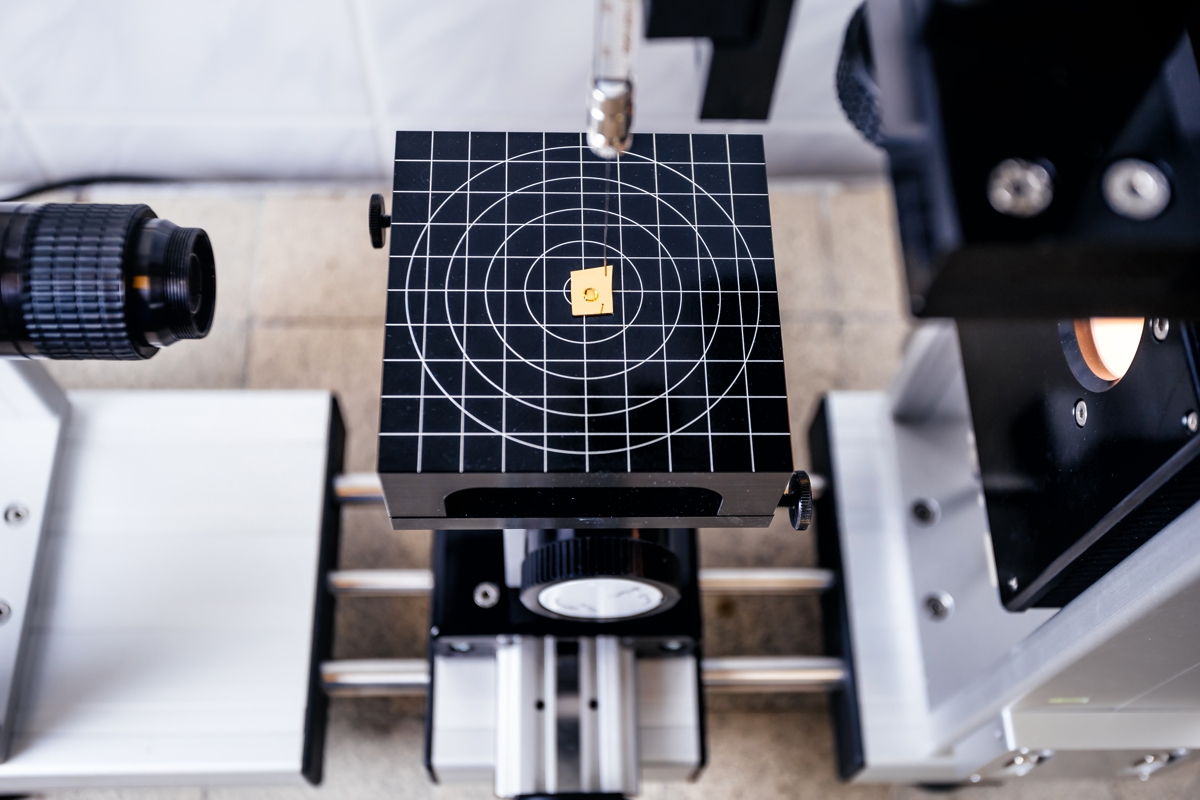The use of Antibody–Ferrocene Conjugates as a Platform for Electro-Chemical Detection of Low-Density Lipoprotein
The purpose of this study was to develop an electrochemical platform for the detection of LDL based on an antibody–ferrocene conjugate. An anti-apolipoprotein B-100 antibody labeled with ferrocene was covalently immobilized on the layer of 4-aminothiophenol (4-ATP) on the surface of gold electrodes. Upon interaction between LDL and the antibody–ferrocene conjugate, a decrease in the ferrocene redox signal registered by square wave voltammetry was observed, which depends linearly on the concentration from 0.01 ng/mL to 1.0 ng/mL. The obtained limit of detection was equal to 0.53 ng/mL. Moreover, the satisfied selectivity toward human serum albumin (HSA), HDL, and malondialdehyde-modified low-density lipoprotein (MDA-LDL) was observed. In addition, the acceptable recovery rates of LDL in human serum samples indicate the possible application of immunosensors presented in clinical diagnostics.
Development of electrochemical sensor for determination of dopamine in human plasma
A thio-derivative of corrole has been immobilized on the surface of gold electrodes via covalent Au−S bonds acting as a selective receptor for dopamine. The supramolecular complex formation on the electrode surface between the corrole host and dopamine guest via hydrogen bonding was detected by Osteryoung square wave voltammetry and by electrochemical impedance spectroscopy using [Ru(NH3)6]Cl3 as the redox marker. The proposed sensor, displaying good sensitivity towards DA (detection limit in 10-12 M range), good selectivity (human plasma components have no influence on dopamine determination), simple and quick procedure of electrode preparation. could be applied for the determination of dopamine in clinical analysis.
Development of immunosensors for determination of Plum Pox Virus in plant extracts
The immunosensor was based on gold electrodes modified with: 1,6-hexanedithiol, gold nanoparticles, anti-PPV IgG polyclonal antibody and BSA. It was used for determination of the virus in the extracts from plum (Prunus domestica) and tobacco (Nicotiana benthamiana) leaves. The immunosenor displayed very good detection limit 10 pg/ml and wide dynamic range from 10 pg PPV/ ml to 200 pg/ml. The presence of extract form plant materials has no influence on immunosensor response. The immunosensor was capable of discriminating between samples from healthy plants and samples containing 0.01% of extract from infected plant material.
Development of genosensors for determination of Avian Influenza Virus H5N1
The genosensor, fabricated based on self-assembling thiolated ssDNA probe on the gold electrode surface, displayed good sensitivity, namely detection limits of 2.2×10-11 M and of 2.4×10-11 M for the complementary 20-mer ssDNA and for the double stranded 181-bp DNA containing 20 nucleotides complementary to the target at 3’-end, respectively. The genosensor shows also good selectivity. Non-complementary target DNA generated weak responses. One of the main its advantage is the suitability for determination of PCR products (double stranded DNA fragments) and discrimination of different positions of the complementary parts. Considering the above analytically important parameters, the presented genosensor could be successfully applied for detection of the H5N1 virus.
Development of novel voltammetric biosensor for determining acrylamide in potato chips extracts
A carbon-paste electrode modified with hemoglobin can be used for direct electrochemical determination of acrylamide. The base of the proposed biosensor is the formation of a hemoglobin-acrylamide adduct, which affects the redox properties of the heme part of hemoglobin. The decrease of the peak current of the reduction process (Hb-Fe3+/Hb-Fe2+) occurring upon increasing concentration of acrylamide could be treated as an analytical signal.
The proposed biosensor was effective regarding the following parameters: very good sensitivity towards acrylamide (detection limit is 1.2 x 10 –10 M), very good selectivity (the matrix, water extract from potato crisps — has no influence on the electrochemical signal generated in the presence of acrylamide in solution), very simple procedure of sample preparation.
Therefore, the carbon-paste electrodes modified with hemoglobin might be recommended for direct electrochemical determination of acrylamide in the food samples.
Development of potentiometric sensors for determination of undissociated forms of phenol derivatives and diaminobenzene isomers
The main achievement is proving that membranes modified with hosts possessing phenolic groups generate cationic potentiometric responses upon stimulation by uncharged guests possessing NH2 groups. The base of the potentiometric signal generation relies on the proton transfer from the aqueous phase on the supramolecular complexes located at the interface.
We can conclude that the generation of potentiometric signals by uncharged molecules is governed by the transport of protons between the aqueous and membrane / aqueous interface. The acidity / basicity of the hosts decide about the direction of the transfer of protons.
